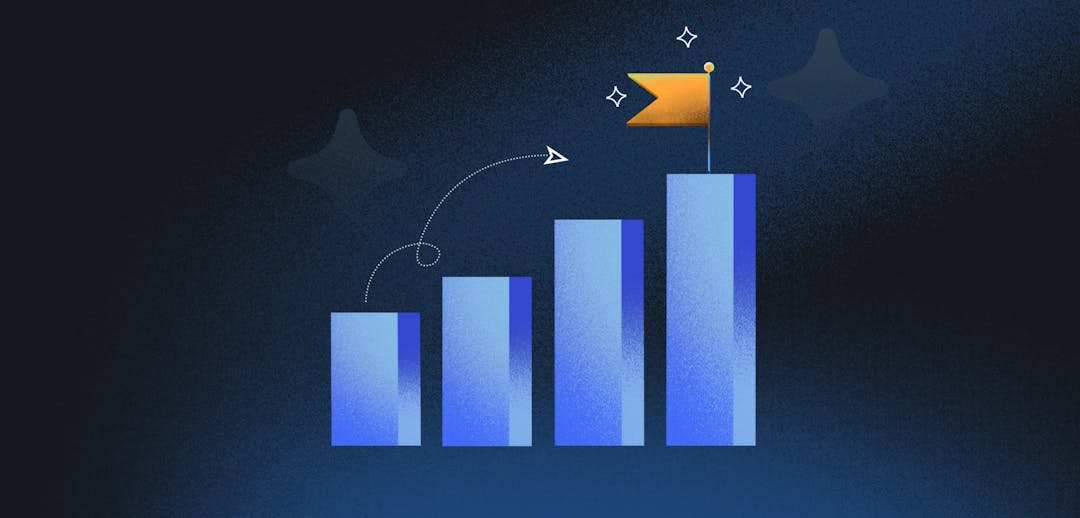We spoke to DueDil’s CEO Justin Fitzpatrick about the challenges of moving into new markets. Here are the key takeaways from the big, burning questions that every scaling startup wants answered.
What challenges did you encounter when moving upmarket having previously sold B2C?
For Justin Fitzpatrick, the process of moving upmarket started by looking at how to turn DueDil’s free users into paid customers. As Justin acknowledges, if you give away a product for free that people used to pay for, you’re going to be popular - but there’s a question about how much value your company is getting from free users too.
“The real learning as we went on that journey from a free product to an enterprise-grade product was really understanding the pain points of the people for whom we’re addressing those pains”, Justin shares.
For Justin, it’s important to find out who your users are to cut a path to monetization. In DueDil’s case, they found that their user base was broad. There was no one industry or profile that they could target; instead they discovered lots of people were using DueDil, from individuals using their platform on a casual basis to some more intense use cases.
So, how do you cut that path to monetization?
Justin recommends you ask yourself two questions. “Who is extracting disproportionate value? How can we capture more of that value ourselves?”
When looking back on DueDil’s journey, their move from a freemium, B2C, self-serve product to an enterprise product came down to ascertaining the user who’s getting disproportionate value and then looking at the problems they’re facing and how they buy.
Justin recommends you ask yourself two questions. “Who is extracting disproportionate value? How can we capture more of that value ourselves?”
What did you learn from the period of time where you were serving freemium SaaS customers and more enterprise-level customers?
DueDil quickly learned that “free users aren’t free” - they do cost your business something! However, Justin acknowledges the benefits of the freemium SaaS model for its ability to build brand awareness. Once the awareness and interest in your product is there, then it’s time to look at creating a nurture stream to turn those freemium users into customers using your product at enterprise level.
One of the ways to do this, according to Justin, is to decide within the free product how you position the value of the product. This way you get people down the buyer journey and build the right kind of awareness. The right kind of engagement is key and this can be achieved by balancing how you manage your brand in the market and what aspects of the product you’re showing your users.
So can freemium SaaS work? Justin acknowledges that some of the biggest SaaS businesses have been built this way - but for other SaaS companies freemium can be considered a marketing cost to raise awareness and not a sales strategy.
In the process of moving upmarket, how do you decide which customers to voluntarily churn?
We wonder if you should even say goodbye to certain customer types - maybe revenue is good regardless?
For Justin, the only way to decide which customers you’re willing to say goodbye to is by really understanding the economics around those customers. This comes down to looking at acquisition and retention costs to determine which customers are profitable and which aren’t. For DueDil, this was a big but very rewarding operation given the huge range of contract types they had.
Justin’s takeaway advice? It’s important to establish the minimum you need to sell at for it to make financial sense to keep a customer.
"It’s important to establish the minimum you need to sell at for it to make financial sense to keep a customer".
What should you have in place before you move to expand into new territories?
DueDil sees expanding into new geographies as a phased approach. For Justin, there are 3 phases to any market entry strategy:
- Building out your product and platform and demonstrating the value of it in the market you’re currently in.
- Looking into how you can leverage your existing client base to move into new regions.
- Looking into how you can use the existing sales function to test new acquisition into new markets.
View the full conversation with Justin:
To watch our other SaaS Stories events, check out our YouTube playlist.
Focus on scaling your startup by letting Paddle take the hassle out of your billing. Book a demo here and see how we can help your business grow.




